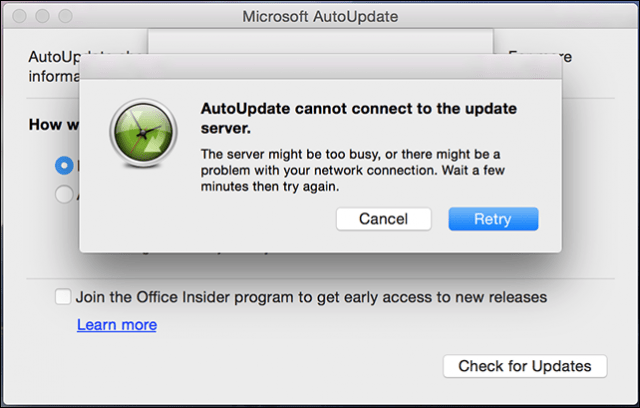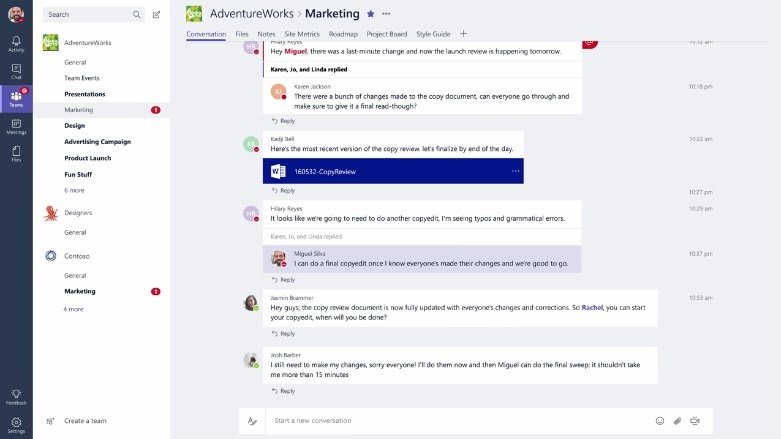Microsoft.com Teams Mac 10.11.6
Microsoft Teams is for everyone. Whether it’s chat, calls, or video, anyone can engage at any time, bringing everyone closer. Your docs, photos, videos, chat history, and meeting notes are always there, so it’s easier to work together. Set up your team’s space with all the apps you need so you can stay in just one place instead of jumping.
-->There are three types of log files automatically produced by the client, which can be leveraged to assist in monitoring and troubleshooting Teams:
This article describes these logs and how they are used. For information about troubleshooting specific issues, see: Teams Troubleshooting. For information about how to contact support, see Get support. When creating a support request with Microsoft Support, the support engineer will require the debug logs. Having the debug logs on hand before creating the support request will allow Microsoft to quickly start troubleshooting the problem. Media or Desktop logs are only required if requested by Microsoft.
Note
- Microsoft Teams training. See the basics or explore more with these training courses. EXPLORE TRAINING. Guidance from the people who design and build Teams. Connect with friends & family. Stay connected with friends and family in Teams.
- Microsoft Teams training. See the basics or explore more with these training courses. EXPLORE TRAINING. Guidance from the people who design and build Teams. Connect with friends & family. Stay connected with friends and family in Teams.
In this article, the term Debug logs refers to the logs that are used for troubleshooting. However, the files that are generated for these logs will contain the term diagnostic logs in their names.
Collect and enable logging

It’s important to collect logs as soon as an issue occurs. The logs can be collected together with just a couple of clicks.
Windows:Right-click on the Teams icon in the system tray and choose Collect support files.
Mac:Select the Help menu and choose Collect support files.
Debug, Desktop, and Media logs will be collected in one folder with the name MSTeams Diagnostics Log . This folder can be compressed and shared when you open a support request with Microsoft Support. The folder will contain folders for Desktop, Meeting (Media), and Debug (web). You can collect the files using the following keyboard shortcuts:
Windows:Crtl + Alt + Shift + 1
Mac:Option + Command + Shift + 1
Media logging is turned off by default. To enable Media logging, users must turn on the option in the Teams client. Go to Settings > General, and select Enable logging for meeting diagnostics (requires restarting Teams). The Teams client must be restarted for logging to begin.
Note
If Media logging is enabled, there will be additional files included in the Meeting folder which are necessary for investigating audio and video issues. If Media logging is not enabled, there will be a limited number of logs available.
The following table outlines the various clients and their associated logs. Log files are stored in locations specific to the client and operating system.
| Client | Debug | Desktop | Media |
|---|---|---|---|
| Web | X | - | - |
| Windows | X | X | X |
| Mac OSX | X | X | X |
| Linux | X | X | X |
| iOS | - | - | - |
| Android | - | - | - |
For a complete list of supported operating systems and browsers, see Get clients for Microsoft Teams.
Debug logs
See the Collect and enable logging section for Windows and Mac instructions. Debug logs are produced by the Windows and Mac desktop clients, as well as by browser-based clients. The logs are text-based and are read from the bottom-up. They can be read using any text-based editor, and new logs are created when logging into the client.
Debug logs show the following data flows:
Login
Connection requests to middle-tier services
Call/conversation
To collect logs for Linux:Keyboard shortcut: Ctrl + Alt + Shift + 1The files will be available in ~/Downloads
To collect logs for Browser:Keyboard shortcut: Crtl + Alt + Shift + 1The files will be available in %userprofile%Downloads
Media logs
See the Collect and enable logging section for Windows and Mac instructions. Media logs contain diagnostic data about audio, video, and screen sharing in Teams meetings. They are required for support cases that are linked to call-related issues.
Media logging is turned off by default. To log diagnostic data for Teams meetings, users must turn on the option in the Teams client. Go to Settings > General, select the Enable logging for meeting diagnostics (requires restarting Teams) check box, restart Teams, and reproduce the issue.
When you send the log files to Microsoft support, please verify the timestamp of the log files to ensure the logs cover the time frame when you reproduced the issue.

To collect logs for Linux:The files will be available in ~/.config/Microsoft/Microsoft Teams/media-stack/.blog and ~/.config/Microsoft/Microsoft Teams/skylib/.blog.
Here's a list of the log files that are generated and the information they contain.
| Log file name | Description |
|---|---|
| Teams.msrtc-0-s1039525249.blog | Contains information related to the media stack. This includes channel status such as resolution, decoders and encoders used, and the number of frames sent and received, and camera and video-based screen sharing (VBSS) session status. |
| rtmcontrol.msrtc-0-2415069487.blog | Records information related to remote control actions, such as the time stamp when control is given, and mouse pointer information. |
| Teams_MediaStackETW-2-U-xr-U.etl | Records media stack trace events. |
| Debug-0-s2790420889.blog | Contains information related to the media agent, including rendering quality. |
| tscalling-0-2061129496.blog | Records events in the ts-calling API. |
Desktop logs
See the Collect and enable logging section for Windows and Mac instructions. Desktop logs, also known as bootstrapper logs, contain log data that occurs between the desktop client and the browser. Like media logs, these logs are only needed if requested by Microsoft. The logs are text-based and can be read using any text-based editor in a top-down format.
To collect logs for Linux:Click on the Microsoft Teams icon in your system tray, and select Get Logs.The files will be available in ~/.config/Microsoft/Microsoft Teams/logs.txt.
Browser trace
For some categories of errors, Microsoft Support might require you to collect a browser trace. This information can provide important details about the state of the Teams client when the error occurs.
Before you start the browser trace, make sure that you’re signed in to Teams. It's important to do this before you start the trace so that the trace doesn't contain sensitive sign-in information.
Microsoft Teams Install For Mac
After you’re signed in, select one of the following links, as appropriate for your browser, and follow the provided steps.
Note
In the steps, replace all references to the Azure portal with the Teams client.